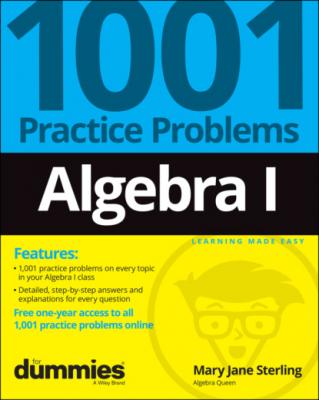Algebra I: 1001 Practice Problems For Dummies (+ Free Online Practice). Mary Jane Sterling
Чтение книги онлайн.
Читать онлайн книгу Algebra I: 1001 Practice Problems For Dummies (+ Free Online Practice) - Mary Jane Sterling страница 29

625.
626.
627.
628.
629.
Applying the Quadratic Formula to Quadratic Equations
630–641 Solve each quadratic equation using the quadratic formula.
630.
631.
632.
633.
634.
635.
636.
637.
638.
639.
640.
641.
Completing the Square to Solve Quadratic Equations
642–645 Solve each quadratic equation by “completing the square.”
642.
643.
644.
645.
Writing Complex Numbers in the Standard a + bi Form
646–653 Rewrite each as a complex number in the form
646.
647.
648.
649.
650.
651.
652.
653.
Finding Complex Solutions Using the Quadratic Formula
654–655 Use the quadratic formula to solve the equations. Write your answers as complex numbers.
654.
655.
Chapter 15
Solving Polynomials with Powers Three and Higher
Apolynomial is a smooth curve that goes on and on forever, using input variables going from negative infinity to positive infinity. To solve a polynomial means to set the equation equal to 0 and determine which, if any, numbers create a true statement. Any numbers satisfying this equation give you important information: They tell you where the graph of the polynomial crosses or touches the x-axis.
The Problems You’ll Work On
Solving polynomials in this chapter requires the following techniques:
Counting the number of possible real roots/zeros, using Descartes’s Rule of Signs
Making a list of the possible rational roots/zeros, using the Rational Root Theorem
Putting Descartes’s Rule of Signs and the Rational Root Theorem together to find roots
Applying the Factor Theorem
Solving polynomial equations by factoring
Applying synthetic division
What to Watch Out For
As you probably know, you can come up with a different answer to a math problem by simply confusing or forgetting one step; here are some things to watch out for:
Confusing real roots with rational roots; rational roots are real, but real roots aren’t necessarily rational